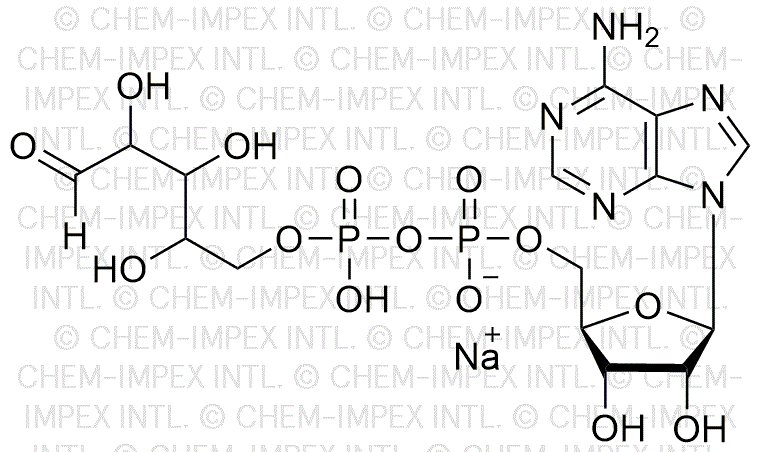Adenosine-5'-diphosphoribose sodium salt is widely utilized in research focused on:
- Cell Signaling Studies: This compound plays a crucial role in cellular signaling pathways, making it essential for researchers studying signal transduction and cellular responses.
- Biochemical Assays: It is commonly used in various biochemical assays to measure enzyme activity, particularly in studies involving kinases and phosphatases, providing insights into metabolic processes.
- Drug Development: In pharmaceutical research, it serves as a valuable tool for developing new drugs targeting ATP-related pathways, which are critical in many diseases, including cancer.
- Neuroscience Research: The compound is significant in studying neuronal signaling and synaptic plasticity, aiding in understanding neurological disorders and potential treatments.
- Cellular Energy Metabolism: It helps researchers investigate energy metabolism in cells, contributing to a better understanding of conditions like diabetes and obesity.
General Information
Properties
Safety and Regulations
Applications
Adenosine-5'-diphosphoribose sodium salt is widely utilized in research focused on:
- Cell Signaling Studies: This compound plays a crucial role in cellular signaling pathways, making it essential for researchers studying signal transduction and cellular responses.
- Biochemical Assays: It is commonly used in various biochemical assays to measure enzyme activity, particularly in studies involving kinases and phosphatases, providing insights into metabolic processes.
- Drug Development: In pharmaceutical research, it serves as a valuable tool for developing new drugs targeting ATP-related pathways, which are critical in many diseases, including cancer.
- Neuroscience Research: The compound is significant in studying neuronal signaling and synaptic plasticity, aiding in understanding neurological disorders and potential treatments.
- Cellular Energy Metabolism: It helps researchers investigate energy metabolism in cells, contributing to a better understanding of conditions like diabetes and obesity.
Documents
Safety Data Sheets (SDS)
The SDS provides comprehensive safety information on handling, storage, and disposal of the product.
Product Specification (PS)
The PS provides a comprehensive breakdown of the product’s properties, including chemical composition, physical state, purity, and storage requirements. It also details acceptable quality ranges and the product's intended applications.
Certificates of Analysis (COA)
Search for Certificates of Analysis (COA) by entering the products Lot Number. Lot and Batch Numbers can be found on a product’s label following the words ‘Lot’ or ‘Batch’.
*Catalog Number
*Lot Number
Certificates Of Origin (COO)
This COO confirms the country where the product was manufactured, and also details the materials and components used in it and whether it is derived from natural, synthetic, or other specific sources. This certificate may be required for customs, trade, and regulatory compliance.
*Catalog Number
*Lot Number
Safety Data Sheets (SDS)
The SDS provides comprehensive safety information on handling, storage, and disposal of the product.
DownloadProduct Specification (PS)
The PS provides a comprehensive breakdown of the product’s properties, including chemical composition, physical state, purity, and storage requirements. It also details acceptable quality ranges and the product's intended applications.
DownloadCertificates of Analysis (COA)
Search for Certificates of Analysis (COA) by entering the products Lot Number. Lot and Batch Numbers can be found on a product’s label following the words ‘Lot’ or ‘Batch’.
*Catalog Number
*Lot Number
Certificates Of Origin (COO)
This COO confirms the country where the product was manufactured, and also details the materials and components used in it and whether it is derived from natural, synthetic, or other specific sources. This certificate may be required for customs, trade, and regulatory compliance.


